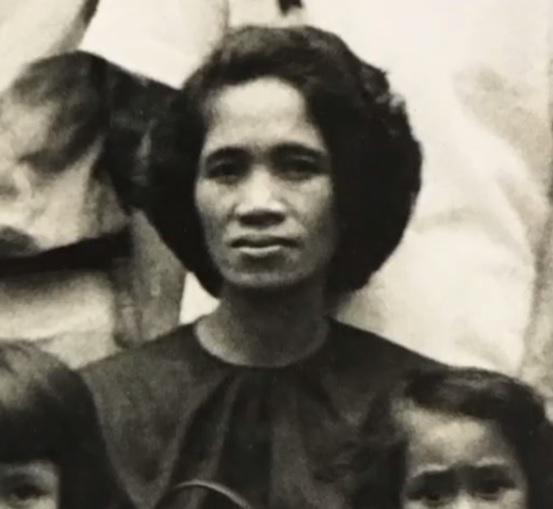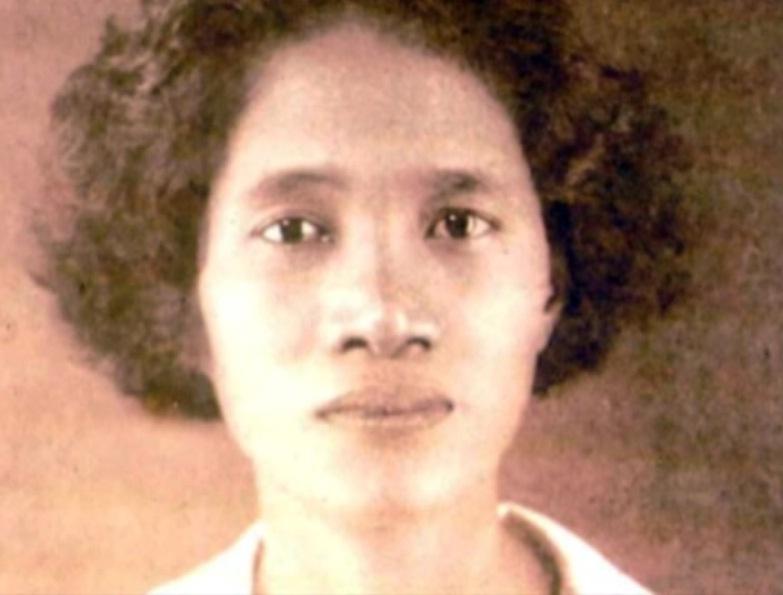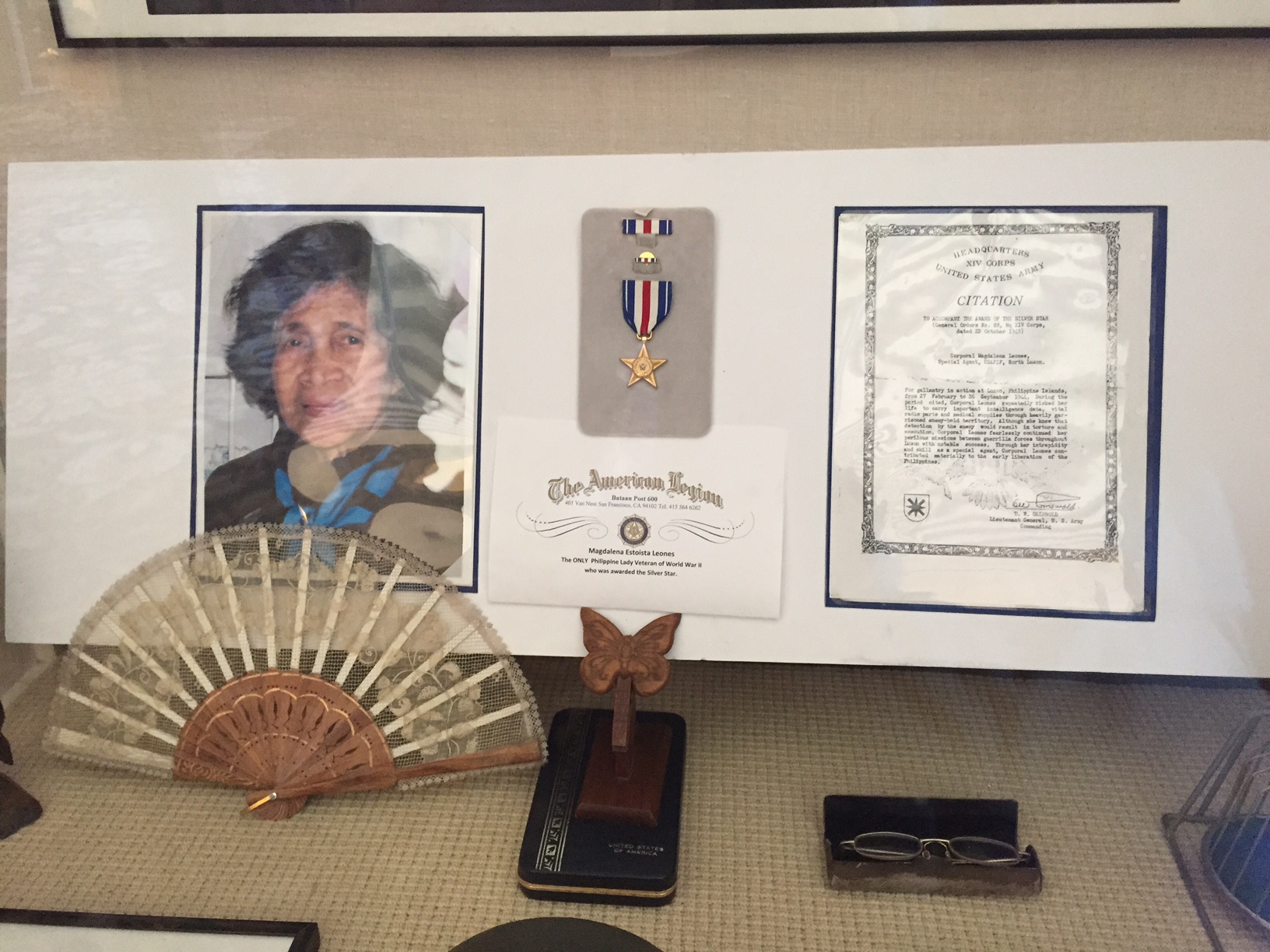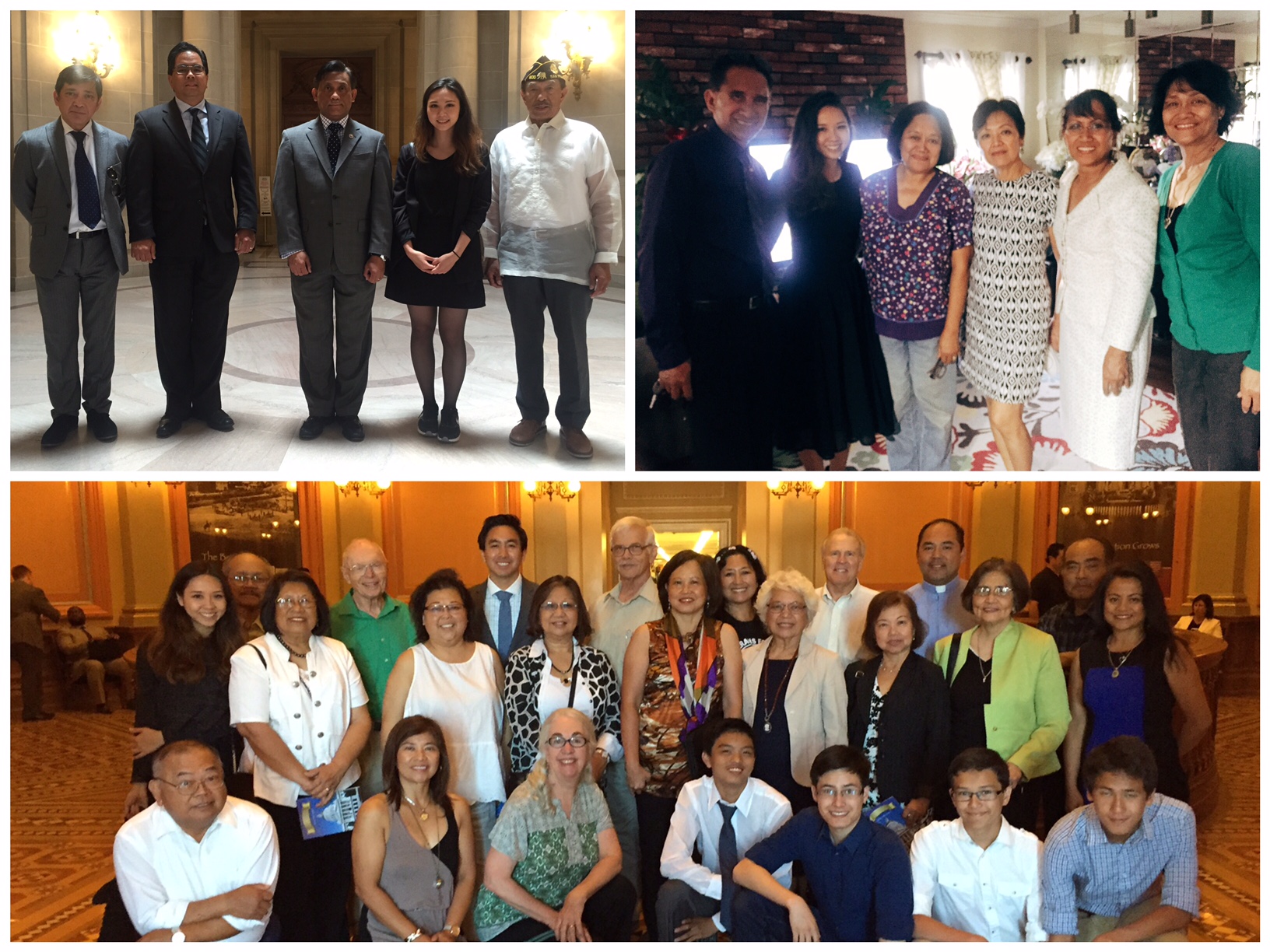
Photo credt: GMA News
For about a year now, I have spent almost every day thinking about a woman. A woman with no relation to my family or past. A woman who never knew how much I thought about her, and who would never found out.
By the time I was able to meet her for the first time, it was in San Francisco, on a bright June day. Sudden gusts spun small tornadoes under a cloudless sky, scattering leaves over the parking lot of Duggan’s Serra Mortuary. I was there for her memorial service. An American flag was draped over her white casket, as it is done for military veterans.
An honor guard played the mournful notes of Taps and conducted a three-volley salute. The shots from the rifle boomed like cracks of thunder outside. The guard folded the flag and presented it to the woman’s weeping daughter. The women’s children, nieces, and grandchildren huddled around the guard, the daughter, the flag. The honor guard quietly thanked the daughter, on behalf of the President of the United States, for the woman’s service to the country.
For many of us witnessing the sacred moment, we knew that she had served not one country, but two.
The ‘Lioness’ of Agents
The woman was Magdalena Leones: Filipina, resistance fighter, spy, war veteran, unsung hero. Born in the Mountain Province as the daughter of a Filipino Protestant preacher, her quiet, peaceful life came to a halt when the Japanese invaded the Philippines in 1942. She was briefly imprisoned, and when released, made to witness a terrible slaughter. She knew that life under occupation would be unbearable. The violence of the Japanese military, especially against innocent people, turned her from bystander to resister. She saw no other way but to fight back.
Magdalena left the mountains for Manila, and met up with old friends, missionary Helen Wilk and doctor Hawthorne Darby at the Emmanuel Cooperative Hospital. There, with Rev. Mary Stagg of the Cosmopolitan church, they helped smuggle money and supplies to guerillas hiding in the jungles. They were a small part of a thriving, secret resistance community, one that protested in the shadows of an occupied Manila. Magdalena and the missionaries were helped by a charming lieutenant colonel, who had arrived from the main Allied base in Australia by submarine, sent by General MacArthur himself.
In January of 1944, the Lt. Col. sent Magdalena on a mission: find unit rosters of the guerilla army in Northern Luzon, the USAFIP-NL. Magdalena set off, not knowing that the charming commander would turn out to be a double agent for the Japanese. Mere days later, her friends in Manila were rounded up by the Japanese military police, tortured, and executed. Their bodies were dumped in a shallow grave in the Chinese cemetery.
Magdalena’s mission had saved her from the same fate, but she herself was about to be caught. When the guerilla army in La Union got wind of her mission, they took her in for questioning.

Photo credt: GMA News
Japan-occupied Philippines was a dangerous place, and the enemy lines never clearly drawn. Guerillas, spies, and collaborators hid from each other in plain sight. The guerillas, especially, trusted very few people. Those whom they did not trust, they killed. A woman from Manila they did not know, claiming to be working on behalf of the main allied base in Australia, asking for the names of all their men? It would take a very good story to save her from execution.
It was not a story that saved Magdalena, but a name—two, in fact. Her circumstances intrigued the commander of the USAFIP-NL, Colonel Russell W. Volckmann. He interrogated her himself and discovered that she had known two American missionaries who had saved his life when he escaped the fighting in the early months of the war. Now, those missionaries would save hers.
He sent an agent to Manila to verify her story. Only when the agent returned did Magdalena learn of her friends’ fate. Horrified and furious, she wept.
“Now that you have been working for the Japs, will you consider working for us?” Volckmann asked, half-jokingly. Magdalena agreed and was inducted into the USAFIP-NL as an intelligence agent. She carried out dangerous missions, traveling from hideouts in the mountains to Manila and back, smuggling money, information, and essential supplies.
She bowed to Japanese sentries and breezed past them with hidden papers that, if discovered, could kill her. She scoured the region and helped find rare radio parts that finally connected the guerillas to General MacArthur in Australia, after two years of minimal contact.
They say she watched the western ports in La Union and counted Japanese ships. They say she blew up airplanes in Tuguegarao.
She was caught, several times, and each time managed to escape. One of those times, however, she almost didn’t. Her faith in God saved her time and time again.

The Magdalena Leones display featuring her Silver Star at the Filipino Veterans Education Center in the War Memorial Building, San Francisco. The Silver Star has since been returned to her family.
For her actions, she received a US Silver Star for gallantry in action—the only Asian woman, and one of only five women, to be given such recognition by the US Army during WWII. She had just turned 25. (The Philippine Army has not awarded her its equivalent award, the Gold Cross).
Unlike fellow war heroes who parlayed their experiences into prestigious careers in the military and politics, she returned to her quiet life. She married, had children, and immigrated to the United States, where she lived out the remainder of her long and peaceful life
Though she died in America, she was a Filipina who ultimately fought for the freedom of her country. She loved her country. And it is to the Philippines that she made her final request to return. After her memorial service in San Francisco, her body was brought back to the Philippines. In July 2016 she was ultimately laid to rest in her rightful place of honor in the heroes cemetery, the Libingan ng mga Bayani.
The Importance of Her Legacy
I am now trying to piece together what is known of Magdalena’s life, in the hopes of writing a biography about her. Between the bones of her story are hollows that seem insurmountable. If I’m lucky, I will be able to bridge some of those gaps with fact; if not, then I’ll have to find some other way, using techniques honed by hundreds of creative nonfiction writers and biographers who have come before.
But for now, I busy myself with the past, trying not to marvel at how much the United States, Philippines, and Japan have changed in the seventy years since World War 2. Or how then (as with now), there is no straightforward ‘war’ narrative, only splinters of stories from people who weren’t all good and weren’t all bad, pushed together in a haphazard mosaic. Instead, I am focusing on finding Magdalena in faded photographs, missionary reports, and US Army rosters. In the echoes of abandoned buildings in Tondo and the ghosts of demolished churches in Northern Luzon.
I am learning a lot about the Philippines through Magdalena. For most of my life, the history of my own country was more foreign to me than a distant shore. Not that WWII is a widely-studied subject anyway. After all, the four years of WWII are but an eyeblink in time compared to three hundred-plus years of colonial rule. Our most celebrated heroes fought the Spanish and the Americans, not the Japanese.
And yet, it is during World War II when resistance seeped down into every layer of public consciousness. When ordinary men and women like Magdalena Leones, who didn’t live their lives expecting to die like martyrs like Jose Rizal, took up arms and fought to be free. That’s why the story of Magdalena Leones is so important: it is one of the many unheralded legacies that shouldn’t be forgotten.
The Research Process

Clockwise, from top left: At City Hall in San Francisco with the Philippine Consul and veterans advocate Rudy Asercion (right), who were there to accept Magdalena’s certificate of honor; with Magdalena’s son, daughter, and nieces at their Richmond home; at the State Capitol in Sacramento with Cecilia Gaerlan and supporters of the Bataan Society to show support for the bill calling to award the Congressional Gold Medal to Filipino WWII Veterans
I’ll be honest; the process of finding Magdalena Leones so far has been challenging—not only how to tell the story with what information exists, but where to even find that information in the first place. I’ve been fortunate to have met amazing people who’ve helped with the search so far; most importantly, members of Magdalena’s own family.
If you’re interested in following the research process, plus more personal reflections on the nature of attempting biography, I will be sharing a ‘research diary’ of sorts via an email newsletter, which you can subscribe to here if you’re so inclined.
Think you can help me find Magdalena, or simply want to chat? Drop me a line at bea.pan [at] gmail [dot] com.
Additional links:
